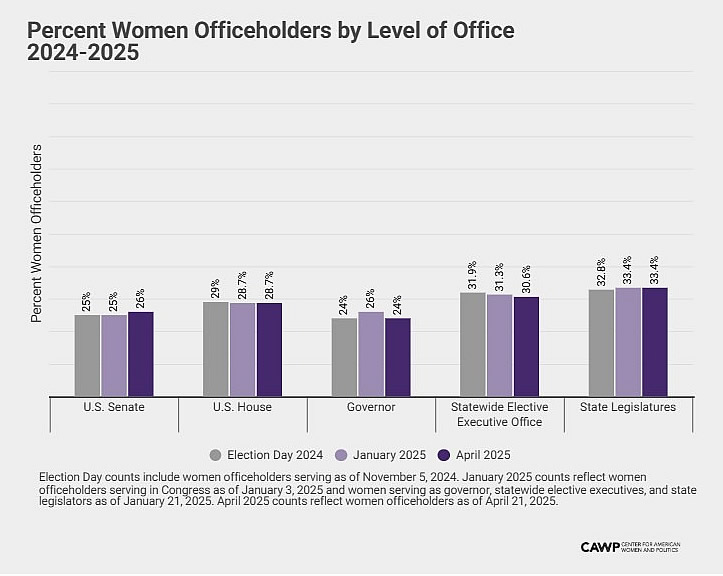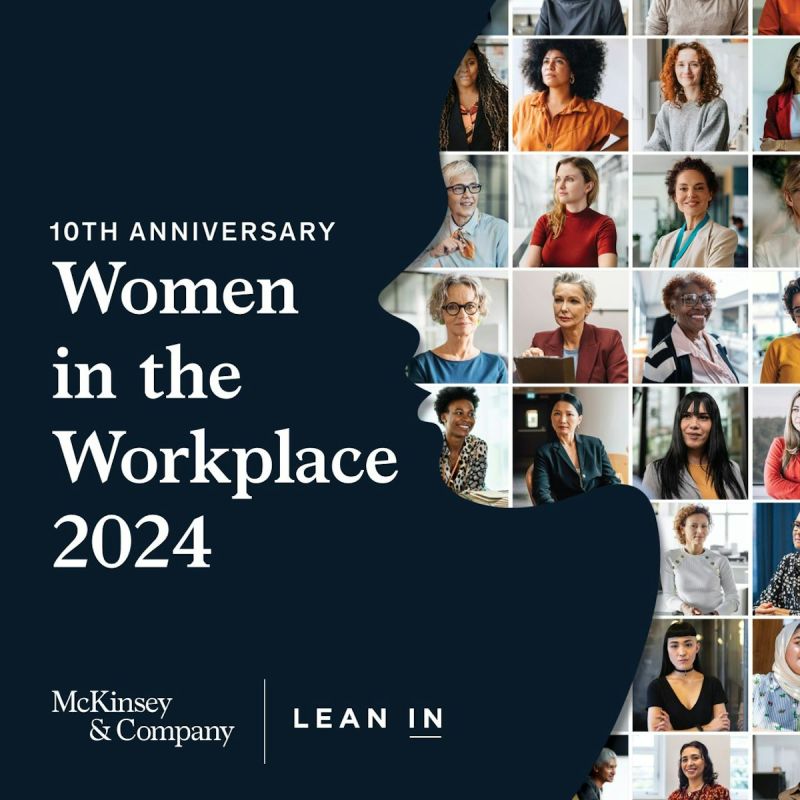Gender Gap United States - Gender Equality

United States gender gap persists despite progress; critics highlight policy failures and systemic inequality
Gender inequality continues to shape American society despite decades of progress toward greater equality. The gender gap—disparities between men and women in economic opportunities, political power, education, and social treatment—reflects deep-rooted structural and cultural patterns. This article examines the current state of gender inequality in the United States, analyzing key dimensions of the gender gap while placing American experiences in historical and global contexts.
While substantial advances have occurred since the mid-20th century, progress has been uneven across different domains and demographic groups. Understanding these patterns requires examining not just overall trends but also intersections of gender with race, class, sexuality, and other identity factors that compound or mitigate disadvantages.
The Economic Gender Gap
Gender Pay Gap
 The wage gap between men and women remains one of the most visible manifestations of gender inequality in the United States:
The wage gap between men and women remains one of the most visible manifestations of gender inequality in the United States:
- In 2023, women earned approximately 83 cents for every dollar earned by men in full-time, year-round positions (U.S. Bureau of Labor Statistics, 2023)
- This represents significant progress from 1963, when the Equal Pay Act was signed and women earned just 59 cents on the dollar
- Progress has slowed since the 1990s, with the gap narrowing by less than 10 percentage points over the past three decades
The aggregate pay gap varies substantially by:
Race and ethnicity:
- White women: 79 cents per white male dollar
- Black women: 64 cents per white male dollar
- Hispanic/Latina women: 57 cents per white male dollar
- Asian American women: 90 cents per white male dollar (National Women’s Law Center, 2023)
Age:
- The gap widens with age, from 90% for women 25-34 to 75% for women 55-64
- This “age penalty” reflects both career interruptions and compounding discrimination effects
Education:
- The gap persists at all educational levels and paradoxically widens at higher education levels
- Women with advanced degrees earn 75% of what men with comparable credentials earn
Occupation and industry:
- Occupational segregation remains significant, with women concentrated in lower-paying sectors
- Even within the same occupations, unexplained pay differentials persist
When controlling for factors such as occupation, experience, education, and hours worked, economists estimate that discrimination accounts for roughly 38% of the remaining wage gap (Blau & Kahn, 2017).
Labor Force Participation
Female labor force participation in the United States has transformed dramatically over the past century:
- In 1950, only 34% of working-age women participated in the labor force
- This figure peaked at 60.3% in 1999
- By 2023, the rate stood at 56.8% (U.S. Bureau of Labor Statistics, 2023)
This plateau and slight decline contrasts with trends in many other developed nations, where female labor force participation has continued rising. The OECD average for female labor participation now exceeds the U.S. rate. Countries like Sweden (76%), Iceland (78%), and Switzerland (76%) demonstrate significantly higher female workforce participation (OECD, 2023).
Several factors contribute to the U.S. stagnation:
- Limited family-friendly policies including paid family leave and affordable childcare
- The COVID-19 pandemic, which disproportionately pushed women out of the workforce
- High childcare costs relative to wages for many women
Leadership and the Corporate Ceiling
Despite representing nearly half the workforce, women remain underrepresented in leadership positions:
- Women hold 29.1% of board seats in S&P 500 companies (Catalyst, 2023)
- Only 8.8% of Fortune 500 companies have female CEOs (as of 2023)
- Women represent 40% of managers but only 21% of C-suite executives
This underrepresentation reflects both:
- The “glass ceiling” – invisible barriers to advancement to top positions
- The “broken rung” – barriers to initial promotion to management
Progress has accelerated in recent years, with the percentage of female board members nearly doubling since 2012. However, this progress has been concentrated primarily among white women, with women of color holding just 7% of board seats.
Unlike many European countries that have implemented mandatory board quotas (Norway requires 40% female representation, France 40%, Germany 30%), the United States has relied primarily on voluntary corporate initiatives and investor pressure to increase female representation in leadership.
Wealth Gap
Beyond income disparities, gender gaps in wealth accumulation reveal deeper economic inequalities:
- Single women own 32 cents for every dollar of wealth owned by single men
- The median wealth for single women is $65,000 compared to $100,000 for single men (Federal Reserve, 2022)
This wealth gap stems from multiple factors:
- Lifetime earnings disparities that limit savings and investment capacity
- Different investment behaviors, with women historically making more conservative financial choices
- Differential debt burdens, particularly student loan debt
- Gender disparities in entrepreneurship funding, with women receiving just 2.3% of venture capital (PitchBook, 2023)
- Pension and Social Security gaps resulting from interrupted work histories and lower lifetime earnings
Political Representation
Legislative and Executive Representation
Women’s representation in American politics has improved dramatically, but remains far from parity:
- Congress: Women hold 28% of seats in the 118th Congress (2023-2025)
– Senate: 25 of 100 senators (25%)
– House: 124 of 435 representatives (28.5%) - This represents substantial progress from 1992 (the “Year of the Woman”), when women held just 10% of congressional seats
- State legislatures: Women occupy 32.7% of state legislative seats nationwide (Center for American Women and Politics, 2023)

At the executive level:
- As of 2023, 12 women serve as governors (24% of states)
- The United States elected its first female Vice President, Kamala Harris, in 2020
- The U.S. has yet to elect a female president, unlike 63 other countries that have had female heads of state
Significant racial disparities exist in political representation:
- Women of color represent just 10.3% of Congress despite constituting approximately 20% of the U.S. population
- The first women of color governors were elected only in the past decade
Judicial Representation
The judiciary has seen significant changes in gender composition:
- Supreme Court: 4 of 9 justices are women (44%) following appointments in the past decade
- Federal judiciary: Women hold 34% of active federal judgeships
- State courts: Women represent 39% of state court judges (National Association of Women Judges, 2023)
Global Comparisons
The United States ranks relatively low in women’s political representation among developed democracies:
- In parliamentary representation, the U.S. ranks 70th globally (Inter-Parliamentary Union, 2023)
- Countries like Rwanda (61%), Cuba (53%), New Zealand (49%), Mexico (48%), and Sweden (46%) have achieved or approached gender parity in their national legislatures
- Many countries have accelerated women’s representation through gender quotas and proportional representation systems that the U.S. lacks
Educational Attainment
Higher Education Advances
In education, American women have not merely closed the gender gap but reversed it:
- Women earn 57% of all bachelor’s degrees
- Women earn 61% of master’s degrees
- Women earn 54% of doctoral degrees (National Center for Education Statistics, 2023)
This educational advantage represents a dramatic historical shift. In 1970, men earned 59% of all college degrees. The crossover occurred in the early 1980s, and the female educational advantage has grown consistently since then.
However, significant gender segregation persists across fields of study:
- Women earn over 80% of degrees in education, health professions, and psychology
- Women earn less than 25% of degrees in engineering, computer science, and physics
- This academic segregation contributes to occupational segregation and wage disparities in the labor market
Global Context
The female educational advantage is not unique to the United States. Across 34 OECD countries, women represent 58% of bachelor’s degree recipients. However, gender segregation in fields of study follows similar patterns internationally, though with notable exceptions:
- In countries like Malaysia, Tunisia, and Algeria, women represent closer to 40% of STEM graduates
- Nordic countries have achieved greater gender balance in fields like medicine and law but continue to see significant underrepresentation of women in technical fields
Work-Life Balance and Care Economy
Family Policies
The United States stands out among developed nations for its limited family support policies:
- It remains the only OECD country without statutory paid maternity leave
- The Family and Medical Leave Act provides 12 weeks of unpaid leave, but only 56% of workers qualify for these protections
- Only 23% of American workers have access to paid family leave through their employers (Bureau of Labor Statistics, 2023)
By comparison:
- Estonia offers 85 weeks of paid maternity leave
- Japan provides 58 weeks
- Canada offers 52 weeks
- The OECD average is 18 weeks of paid maternity leave
Childcare Access and Costs
Childcare represents a significant barrier to gender equality in the workforce:
- The average annual cost of center-based childcare for an infant in the U.S. is $11,000, exceeding the cost of public college tuition in 33 states
- Childcare costs consume 35% of a single parent’s median income (Child Care Aware of America, 2023)
- Only 20% of children eligible for federal childcare subsidies receive any assistance
High childcare costs contribute to lower maternal employment rates. Countries with universal or heavily subsidized childcare systems like Denmark, Sweden, and France have maternal employment rates 10-15 percentage points higher than the United States.
Time Use and Unpaid Labor
Despite women’s increased participation in paid employment, gender disparities in unpaid labor persist:
- American women spend an average of 4.0 hours daily on unpaid work (housework, childcare, elder care) compared to 2.5 hours for men
- This gender gap of 1.5 hours per day has narrowed from 3.0 hours in 1965 but remains significant
- The combined workload (paid and unpaid) for employed women averages 23 minutes more per day than for employed men (American Time Use Survey, 2022)
The unequal distribution of unpaid care work represents a significant barrier to women’s full economic equality. The COVID-19 pandemic exacerbated these disparities, with women taking on a disproportionate share of increased childcare responsibilities during school and daycare closures.
Health and Bodily Autonomy
Reproductive Rights
Access to reproductive healthcare in the United States has become increasingly restricted and geographically variable:
- Following the Supreme Court’s Dobbs decision in 2022 that overturned federal abortion protections, 22 states have enacted significant abortion restrictions
- This contrasts with global trends toward liberalization of abortion laws in countries from Ireland to Argentina
- Access to contraception remains uneven, with 19 million American women living in contraceptive deserts (Power to Decide, 2023)
Maternal Health Outcomes
The United States has the highest maternal mortality rate among developed nations:
- 23.8 deaths per 100,000 live births, compared to 3-5 deaths in countries like Norway, the Netherlands, and New Zealand (CDC, 2023)
- Striking racial disparities exist, with Black women experiencing maternal mortality rates nearly three times those of white women
- These disparities persist across income and education levels
Healthcare Access and Research
Gender gaps in healthcare access and research include:
- Women’s health conditions receive disproportionately less research funding relative to disease burden
- Women are underrepresented in clinical trials, comprising just 38% of participants in cardiovascular clinical trials despite heart disease being the leading cause of death for women (Journal of the American Heart Association, 2022)
- Women report higher rates of having their pain and symptoms dismissed or minimized by healthcare providers
Violence and Safety
Gender-Based Violence
Gender-based violence remains prevalent in American society:
- 1 in 4 women experience severe intimate partner physical violence in their lifetime
- 1 in 5 women have experienced completed or attempted rape
- Annual costs of intimate partner violence exceed $12 billion in healthcare expenses and lost productivity (National Coalition Against Domestic Violence, 2023)
The U.S. has made progress in addressing gender-based violence through legislation like the Violence Against Women Act (first passed in 1994, most recently reauthorized in 2022). However, implementation challenges persist, including insufficient funding for support services and gaps in law enforcement response.
Sexual Harassment
Workplace sexual harassment continues to affect women’s professional advancement and well-being:
- 38% of women report experiencing sexual harassment in the workplace (Pew Research Center, 2023)
- 72% of workplace sexual harassment incidents go unreported due to fear of retaliation
- Industries with more pronounced power imbalances and male-dominated cultures show higher rates of harassment
The #MeToo movement, which gained prominence in 2017, brought increased attention to sexual harassment and assault. Some institutional changes have followed, but the movement’s long-term impact on reducing harassment remains uncertain.
Intersectional Considerations
Race and Gender
The experiences of American women vary dramatically by race and ethnicity:
- Black women face a larger gender wage gap (64% of white male earnings) than white women (79%)
- Native American women experience the highest rates of gender-based violence, with more than 84% experiencing violence in their lifetime
- Latina women have the lowest rates of health insurance coverage at 20% uninsured
These disparities demonstrate how gender inequality intersects with and is compounded by racial inequality, creating unique challenges for women of color.
LGBTQ+ Considerations
Transgender and non-binary individuals face particular challenges related to gender inequality:
- Transgender women earn 60% less after transition, experiencing both gender discrimination and transphobia
- 29% of transgender people live in poverty, nearly twice the rate of the general population
- Non-binary individuals often face exclusion from both gender-specific spaces and services (National Center for Transgender Equality, 2022)
These experiences highlight how rigid gender systems impact not only cisgender women but anyone who does not conform to traditional gender expectations.
Historical Context and Movements for Gender Equality
Evolution of American Feminism
The struggle for gender equality in the United States has unfolded across multiple “waves” of feminist activism:
- First Wave (19th-early 20th century): Focused primarily on suffrage and legal rights, culminating in the 19th Amendment granting women’s voting rights in 1920
- Second Wave (1960s-1980s): Expanded focus to workplace rights, reproductive freedom, and challenging gender roles in private life
- Third Wave (1990s-2000s): Emphasized diversity within feminism and intersectionality
- Fourth Wave (2010s-present): Characterized by digital activism, focus on sexual violence (#MeToo), and more explicit intersectional analysis
These movements have driven significant legal and policy changes, including:
- Equal Pay Act (1963)
- Title VII prohibiting employment discrimination (1964)
- Title IX ensuring educational equality (1972)
- Pregnancy Discrimination Act (1978)
- Family and Medical Leave Act (1993)
- Violence Against Women Act (1994, reauthorized multiple times)
Global Women’s Rights Movements
American feminist movements connect to global struggles for gender equality. Significant international milestones include:
- UN Convention on the Elimination of All Forms of Discrimination Against Women (CEDAW, 1979) – ratified by 189 countries, though notably not by the United States
- Beijing Declaration and Platform for Action (1995)
- UN Sustainable Development Goal #5 focusing on gender equality (2015)
The United States ranks 43rd in the World Economic Forum’s Global Gender Gap Report 2023, behind most other developed democracies. Top-performing countries include Iceland, Finland, Norway, and New Zealand, which have implemented more comprehensive policy approaches to gender equality.
Economic Impact of Gender Inequality
Macroeconomic Effects
Gender inequality imposes significant costs on the American economy:
- McKinsey Global Institute estimates that achieving gender parity in the labor force would add $4.3 trillion to the U.S. GDP by 2025 (9.5% increase)
- Closing the gender gap in labor force participation alone would add $810 billion to GDP
- Reducing occupational segregation would account for another $1.05 trillion
These projections align with cross-country research showing positive correlations between gender equality and economic growth, innovation, and productivity.

Business Performance
Research consistently demonstrates business benefits from gender diversity:
- Companies in the top quartile for gender diversity are 25% more likely to achieve above-average profitability (McKinsey, 2023)
- Gender-diverse teams show higher innovation and problem-solving capabilities
- Firms with gender-diverse boards demonstrate stronger ESG performance and lower incidence of fraud and corruption
Policy Approaches and Corporate Initiatives
Public Policy Options
Countries that have made more substantial progress toward gender equality have implemented multifaceted policy approaches:
- Family policies: Universal childcare, paid parental leave, flexible work arrangements
- Economic policies: Pay transparency laws, minimum wage increases, unionization support
- Political representation: Electoral gender quotas, campaign finance reform
- Violence prevention: Comprehensive support services, enhanced legal protections
- Education initiatives: Programs to reduce gender segregation in fields of study
The United States has implemented these approaches unevenly, with significant variation across states. California, for example, has enacted more comprehensive equal pay protections, paid family leave, and board diversity initiatives than most other states.
Corporate Initiatives
American companies have increasingly adopted voluntary measures to address gender inequality:
- Pay equity audits and remediation
- Diversity targets for hiring and promotion
- Mentorship and sponsorship programs
- Enhanced parental leave benefits
- Sexual harassment prevention training
Research suggests these initiatives are most effective when:
- They focus on systemic changes rather than “fixing women”
- Senior leadership demonstrates visible commitment
- Accountability mechanisms ensure follow-through
- Approaches address intersectional considerations
Media Representation and Cultural Factors
Media Gender Gaps
Media representation both reflects and reinforces gender inequality:
- Women represent only 37% of speaking characters in top-grossing films
- Female characters are twice as likely to be shown in sexually revealing attire
- Only 15% of film protagonists are women of color
- Women directed just 25% of top films in 2022 (Geena Davis Institute, 2023)
These disparities shape cultural perceptions of gender roles and may contribute to occupational segregation by influencing career aspirations.
Social Norms and Attitudes
American attitudes toward gender roles have evolved significantly:
- In 1977, 74% of Americans believed “it’s much better for everyone, if the man earns the main living and the woman takes care of the home and family”
- By 2023, only 27% agreed with this statement (General Social Survey, 2023)
However, implicit biases persist even as explicit attitudes become more egalitarian. Experimental studies consistently demonstrate unconscious gender biases in evaluations of identical resumes, work products, and leadership behaviors when attributed to women versus men.
Looking Forward: Challenges and Opportunities
Emerging Challenges
Several developments present both challenges and opportunities for gender equality:
- Technological change: Automation disproportionately affects female-dominated occupations, while remote work might reduce barriers for caregivers
- Climate change: Women are more vulnerable to climate impacts yet underrepresented in climate decision-making
- Demographic shifts: An aging population increases care needs, traditionally fulfilled by women
- Political polarization: Gender equality has become increasingly politicized, complicating policy progress
Promising Approaches
Research and experience suggest several promising directions:
- Intersectional approaches that address how gender inequality interacts with race, class, sexuality, and other identity factors
- Men’s engagement in gender equality efforts through initiatives like paternity leave, equitable household division of labor, and allyship in workplaces
- Data-driven interventions using increasingly sophisticated measurement of gender gaps to target resources effectively
- Economic security policies including universal childcare, paid family leave, and minimum wage increases that particularly benefit women
- Institutional redesign rather than individual solutions, focusing on changing systems and structures that produce inequality
The gender gap in the United States presents a complex picture of progress and persistent challenges. Significant advances have occurred in educational attainment and formal legal rights, while economic, political, and social inequalities remain entrenched. The United States lags behind many peer nations in addressing these disparities, particularly regarding work-family policies and political representation.
Progress toward gender equality has not been linear nor uniform across demographic groups. Intersectional analysis reveals how gender disparities are compounded by race, class, and other identity factors, creating varied experiences of inequality among American women.
Looking forward, addressing gender inequality requires comprehensive approaches addressing both structural barriers and cultural attitudes. The economic and social benefits of greater equality provide compelling incentives for action, while persistent challenges demand innovative solutions. The path toward gender equality involves not just policy changes but also evolving understandings of gender itself and its role in American society.
References
American Time Use Survey. (2022). Bureau of Labor Statistics. bls.gov/tus
Blau, F. D., & Kahn, L. M. (2017). The Gender Wage Gap: Extent, Trends, and Explanations. Journal of Economic Literature, 55(3), 789-865.
Bureau of Labor Statistics. (2023). Women in the Labor Force: A Databook. bls.gov/opub/reports/womens-databook
Catalyst. (2023). Women in S&P 500 Companies. catalyst.org/research/women-in-sp-500-companies
Centers for Disease Control and Prevention (CDC). (2023). Maternal Mortality Rates in the United States. cdc.gov/nchs/maternal-mortality
Center for American Women and Politics. (2023). Women in Elective Office 2023. Rutgers University. cawp.rutgers.edu
Child Care Aware of America. (2023). The US and the High Price of Child Care. childcareaware.org
Federal Reserve. (2022). Survey of Consumer Finances. federalreserve.gov/econres/scfindex.htm
Geena Davis Institute on Gender in Media. (2023). See Jane Research. seejane.org/research-informs-empowers
Inter-Parliamentary Union. (2023). Women in National Parliaments. ipu.org
Journal of the American Heart Association. (2022). Sex Disparities in Clinical Research. ahajournals.org
McKinsey Global Institute. (2023).Women in the Workplace. mckinsey.com/women-in-the-workplace
National Center for Education Statistics. (2023). Digest of Education Statistics. nces.ed.gov/programs/digest
National Center for Transgender Equality. (2022). The Report of the 2022 U.S. Transgender Survey. transequality.org
National Coalition Against Domestic Violence. (2023). Statistics. ncadv.org/statistics
National Women’s Law Center. (2023). The Wage Gap: The Who, How, Why, and What To Do. nwlc.org
OECD. (2023). Gender wage gap (indicator). data.oecd.org/earnwage/gender-wage-gap
Pew Research Center. (2023). Gender and Work. pewresearch.org/gender-and-work
PitchBook. (2023). The US VC Female Founders Dashboard. pitchbook.com
Power to Decide. (2023). Birth Control Access. powertodecide.org
World Economic Forum
Global Gender Gap Report United States
The Global Gender Gap Report benchmarks countries on their progress towards gender parity across four thematic dimensions: Economic Participation and Opportunity, Educational Attainment, Health and Survival, and Political Empowerment.
2024
Rank: 43 (out of 146 countries)
Score: 0.747
› report
2023
Rank: 43 (out of 146 countries)
Score: 0.748
2022
Rank: 27 (out of 146 countries)
Score: 0.769
2021
Rank: 30 (out of 156 countries)
Score: 0.763
2020
Rank: 53 (out of 153 countries)
Score: 0.724
2018
Rank: 51 (out of 149 countries)
Score: 0,720
2017
Rank: 49 (out of 144 countries)
Score: 0.718
2016
Rank: 45 (out of 144 countries)
Score: 0.722
UN Women
Women Count Data Hub: United States of America
Globally, some progress on women’s rights has been achieved. In the United States of America, the adolescent birth rate is 17.4 per 1,000 women aged 15–19 as of 2018, down from 18.6 per 1,000 in 2017. As of February 2021, 27.3% of seats in parliament were held by women. In 2019, 78.4% of women of reproductive age (15-49 years) had their need for family planning satisfied with modern methods.

